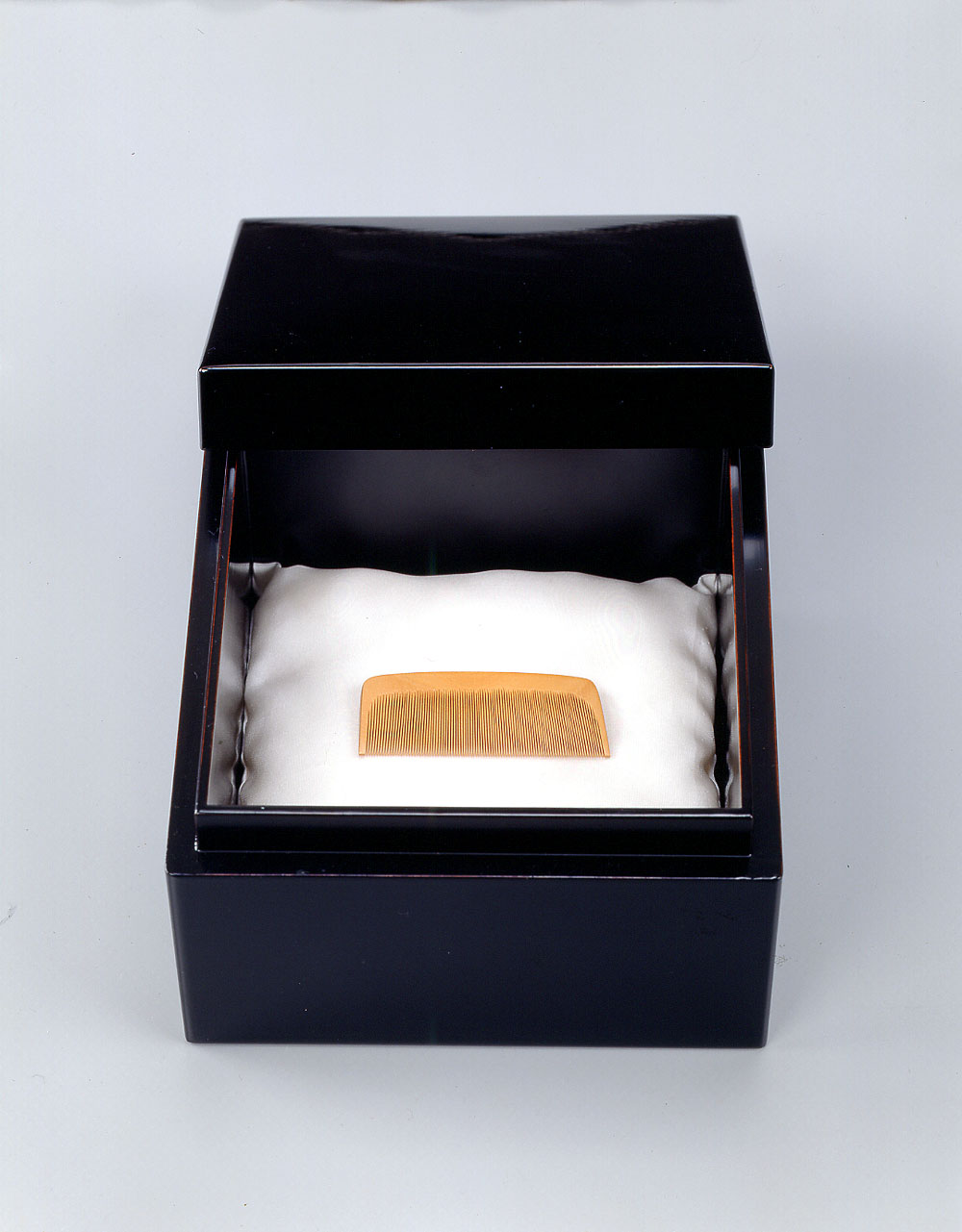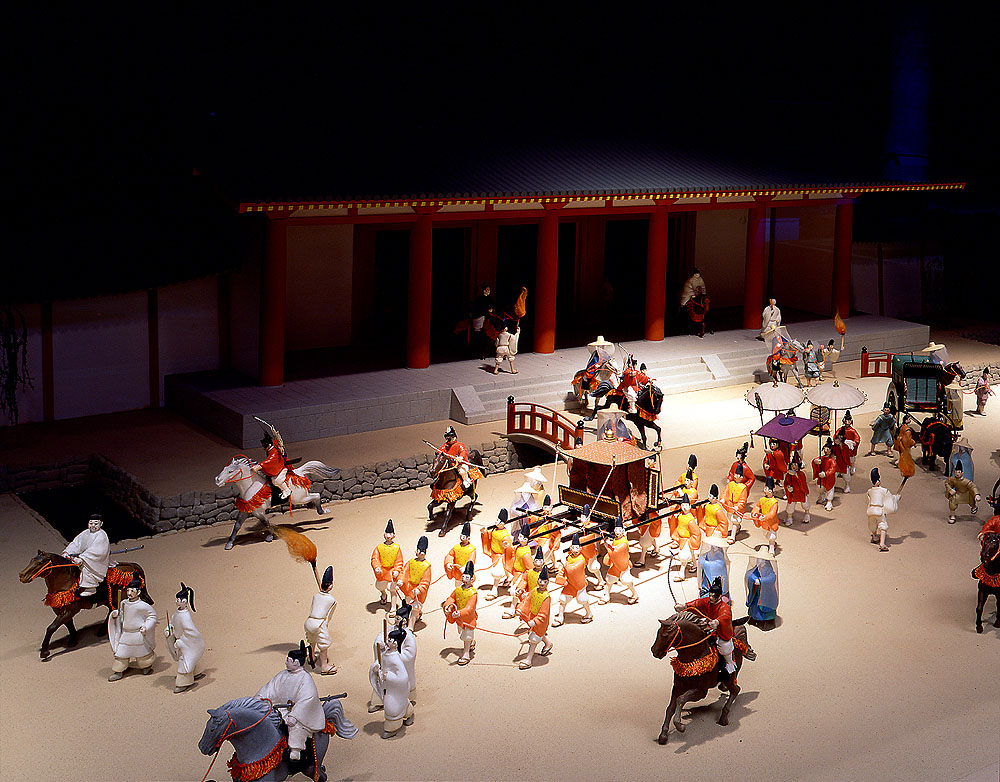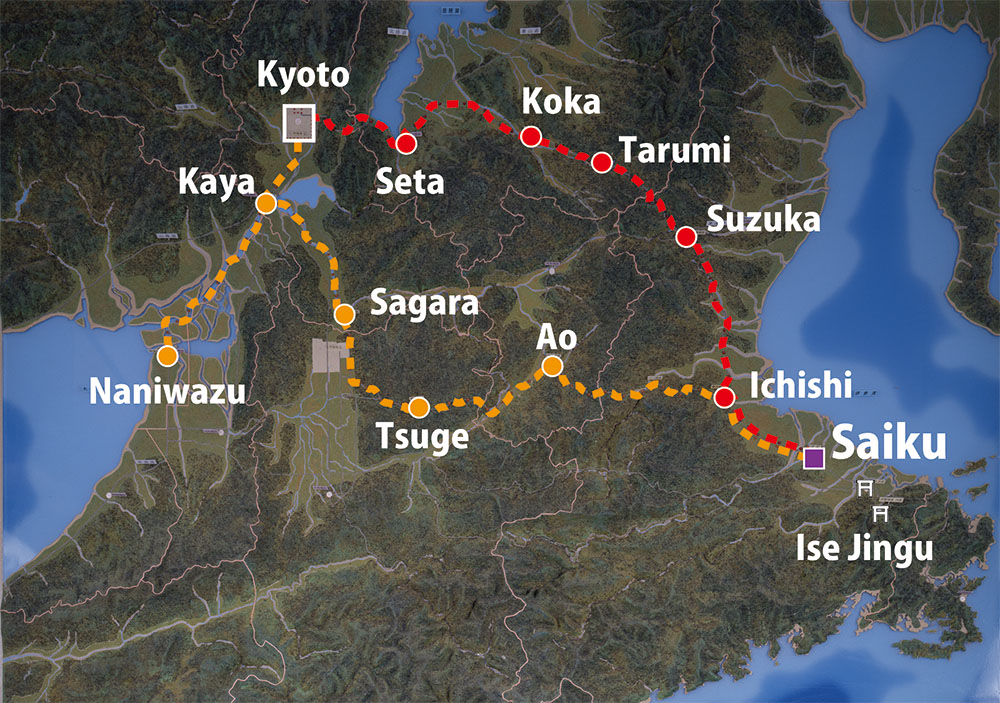The Saio’s departure
Departure ceremony
On the day of her departure to Ise, the Saio performed misogi (purification ritual) in a river in the western part of the Kyoto, which was the capital beginning in the 8th century. After the misogi, she went to the imperial palace for a departure ceremony.The departure ceremony was performed by the emperor himself, who placed a boxwood comb in the Saio’s hair above the forehead, and told her never to look back at the capital. This comb was called the “farewell comb.”
The comb and box on display are reconstructions based on descriptions in an early 12th century document.
Farewell comb
 The Saio’s departure ceremony took place in a building within the imperial palace reserved for the most important ceremonies. Here, the emperor faced the Saio, and after placing a boxwood comb in the front part of her hair told her: “Go straight, without turning your face toward the capital.” The Saio would then embark on a journey of no return. She was recalled to the capital only when the emperor abdicated, died, or when a next of kin died. The article considered most symbolic of this departure was a boxwood comb, usually measuring about six cm in length, often referred to in classical literature as the “farewell comb.”
The Saio’s departure ceremony took place in a building within the imperial palace reserved for the most important ceremonies. Here, the emperor faced the Saio, and after placing a boxwood comb in the front part of her hair told her: “Go straight, without turning your face toward the capital.” The Saio would then embark on a journey of no return. She was recalled to the capital only when the emperor abdicated, died, or when a next of kin died. The article considered most symbolic of this departure was a boxwood comb, usually measuring about six cm in length, often referred to in classical literature as the “farewell comb.”
The Saio’s procession


This diorama shows the procession route in red.
Once she had departed to Ise, the Saio was recalled back to the capital only when the emperor abdicated, or passed away. Although the length of appointment naturally differed from Saio to one person to the next, the longest serving Saio is recorded to have spent 30 years at the Saiku.
The Saio took the route shown in red back to the capital when the emperor abdicated. She took the route shown in yellow when the emperor died.
